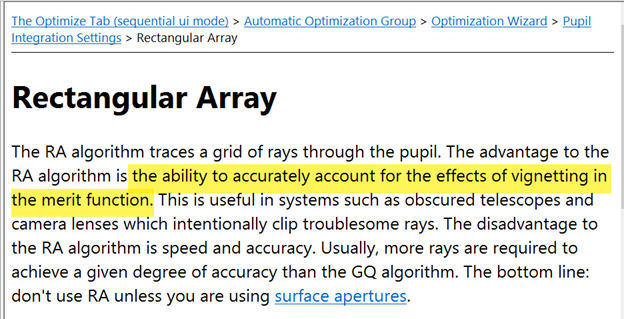Solved
Optimize for minimum vignetting?
In sequential mode, is there any way to check % vignetting directly in the merit function? Currently it seems that I can only access it by opening the vignetting plot, but this is not useful for optimization or monte-carlo analysis.
For context, my application is tolerancing of a laser-mirror system. I would like minimized vignetting to be something I can base my tolerance compensator position on, as this represents beam clipping in the system.
I think tolerance analysis in non-sequential mode would solve this problem, but I already have large body of analysis in the sequential version of the file, so I would like to keep it consistent, if possible.
Thanks!
For context, my application is tolerancing of a laser-mirror system. I would like minimized vignetting to be something I can base my tolerance compensator position on, as this represents beam clipping in the system.
I think tolerance analysis in non-sequential mode would solve this problem, but I already have large body of analysis in the sequential version of the file, so I would like to keep it consistent, if possible.
Thanks!
Best answer by Matthew.Cliffe
Can you use the system efficiency operand? IMAE.
Enter your E-mail address. We'll send you an e-mail with instructions to reset your password.









